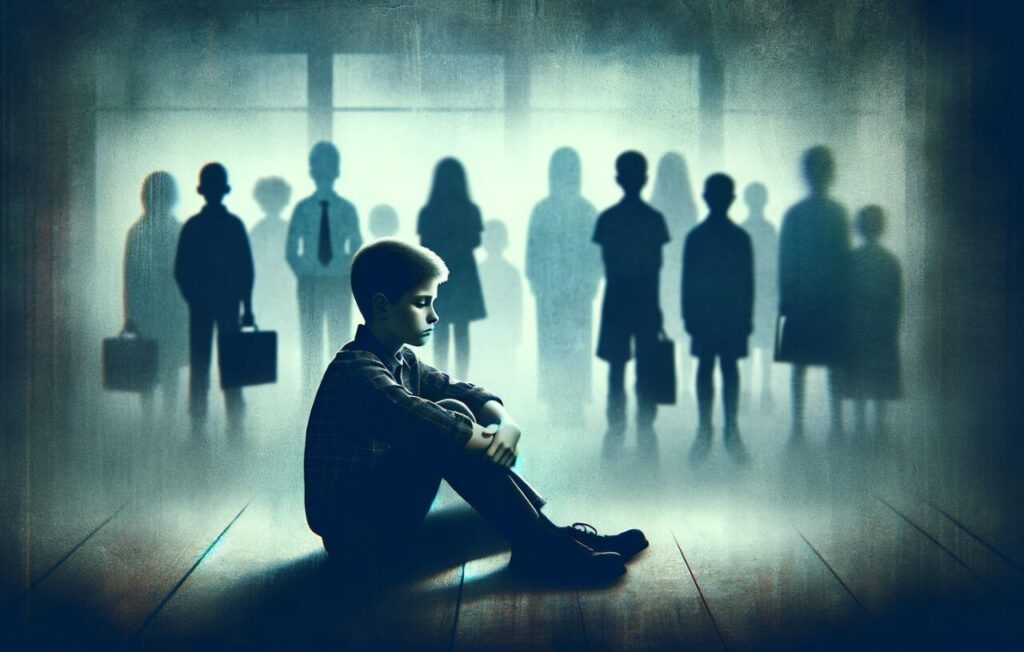According to the American Psychological Association, bullying is a behavior in which someone intentionally and repeatedly causes another person harm, insult, or discomfort. Bullying may be aggressive in nature and can take many forms, such as direct bullying (physical contact, such as hitting or tripping; verbal contact, such as threats or harassment; relational contact, such as gossiping or exclusion) or cyber bullying (threats or harassment conducted through electronics or online). Males tend to use physical aggression, such as physical intimidation and threats, whereas females tend to use verbal aggression, such as gossiping and rumors. Children and adolescents who are bullied may not have done anything to cause the bullying and may struggle to defend themselves in these situations.
How Common is Bullying?
Bullying is very common throughout the United States. More than half of all children and adolescents experience bullying at least once and 10% of all children and adolescents report bullying on a more consistent basis. Approximately 1 in 5 high school students report being bullied in person, and 1 in 6 high school students report being bullied electronically respectively. These numbers are significantly higher for students who identify as LGBTQ, female, or white. Nearly 40% of students who identify as LGBTQ, 30% of students who identify as female, and 30% of students who identify as white report getting bullied in person or electronically. Throughout the United States, about 15% of all public schools report this as a problem, occurring either daily or weekly. Middle school students (28%) experience the highest rates of bullying followed by high school students (16%). Over the last decade, the rates of cyberbullying account for a higher percentage of all bullying cases occurring in schools.
What are the Harmful Effects of Bullying?
Bullying can cause a multitude of physical and psychological problems for both the bullying victim and the bullying perpetrator. These problems can include bodily injury, emotional and social distress, internalized hatred towards the self or towards others, and has even led to suicide in numerous cases. Children and adolescents who are bullied tend to be more passive and have fewer friends. They may appear smaller, struggle with confidence, or have pre-existing mental health problems, such as anxiety. Children and adolescents who are bullied may be at a higher risk of developing depression, anxiety and worry, sleep struggles, poor academic performance, and dropping out of school.
Children and adolescents who bully others have often been the victim of physical abuse or bullying themselves. These children and adolescents tend to experience high levels of depression and anger. Children and adolescents who bully others may be at a higher risk for substance abuse, academic difficulties, and violence later in life. Students who are bullied as well as bully others may be at the highest risk for serious physical and psychological harm. Therefore, children and adolescents who are bullying victims or bullying perpetrators may benefit from school consultation and psychotherapeutic intervention.
How Do I Recognize Bullying and Support My Child?
Several factors can increase the likelihood that a student may become at risk of getting bullied and may become a perpetrator. These factors include family relationships, community involvement, and school performance. If your child is being bullied, they could become more withdrawn, depressed, and reluctant to attend school or other social gatherings. You may also notice a decrease in academic performance and in their desire to see or be with their peers.
There are several ways to support your child. Protective family environments support the healthy development of relationships and connections with mentoring programs can help students feel more connected with their community. Additionally, psychotherapy can help children and adolescents learn how to cope with the physical and psychological harm caused by bullying. Treatment can support children and adolescents in developing and improving the skills needed to boost self-esteem and learning ways to promote self-advocacy. Lastly, treatment can also teach parents how to manage their own feelings about their child’s situation and learn how to best support their child’s needs.
At Restorative Psychological Services, children, adolescents, and parents can receive the psychological support they need to overcome bullying concerns.
For more information, please visit these resources:
Adams, F. D., & Lawrence, G. J. (2011). Bullying victims: The effects last into college. American Secondary Education, 40(1), 4-13. https://www.jstor.org/stable/23100410
American Academy of Child & Adolescent Psychiatry (April, 2017). Bullying. https://www.aacap.org/AACAP/Families_and_Youth/Facts_for_Families/FFF-Guide/Bullying-080.aspx
American Psychological Association. (2023). Bullying. https://www.apa.org/topics/bullying
Centers for Disease Control and Prevention (September, 2021). Fast fact: Preventing bullying. https://www.cdc.gov/violenceprevention/youthviolence/bullyingresearch/fastfact.html
Wolke, D., & Lereya, S. T. (2015). Long-term effects of bullying. Archives of Disease in Childhood, 100, 879-885. https://doi.org/10.1136/archdischild-2014-306667
